On this page
NebraskaThis page lists books about birds and birdwatching in the US state of Nebraska.The books are arranged by publication date with the most recent at the top of the page.
USAFor bird books that cover all, or a large part of, the USA see the following page:
USA bird books
|
|
|
|
The Second Nebraska Breeding Bird AtlasWayne J Mollhoff
Nebraska Ornithologists' Union
Bulletin of the University of Nebraska State Museum, Volume 29
2016
Abstract: "The Second Nebraska Breeding Bird Atlas presents range maps and species accounts of 225 species. This project used standardized atlas criteria and methods to re-survey the breeding avifauna of Nebraska. I used the data gathered to compare against the initial atlas project to detect population shifts, reveal range changes, and species responses to novel pathogens, new pesticides, changing agricultural practices, and a changing environment. The project documented northward expansion of14 species. Using data gathered by standard atlas methods revealed changes in some species that was not detected by other methods. Overall, the project demonstrated the need for recurring projects to help track changes that may not be detected."
|
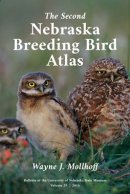 |
|
Warblers in Your Pocket: A Guide to the Wood-Warblers of the Upper MidwestDana Gardner, Holly Carver
Bur Oak Laminated Field Guides: 28
University of Iowa Press
2016
"This newest addition to Iowa's popular series of laminated guides – the twenty-eighth in the series – illustrates the thirty-eight species of warblers that occur in the Upper Midwest states of Minnesota, Illinois, Nebraska, Kansas, North Dakota, South Dakota, Iowa, Indiana, Michigan, Ohio, and Wisconsin. For each species, artist Dana Gardner provides length, range, and habitat; he illustrates male, female, and immature birds where plumage varies; and he includes birds similar to warblers such as kinglets and vireos."
|
Buy from amazon.co.uk 
|
|
Seasons of the Tallgrass PrairiePaul A. Johnsgard
University Of Nebraska Press
2014
"A respected author and scholar, Paul A. Johnsgard has spent a lifetime observing the natural delights of Nebraska’s woodlands, grasslands, and wetlands. Seasons of the Tallgrass Prairie collects his musings on Nebraska’s natural history and the issues of conservation facing our future. Johnsgard crafts essays featuring snow geese, owls, hummingbirds, and other creatures against the backdrop of Great Plains landscapes. He describes prairie chickens courting during predawn hours and the calls of sandhill cranes; he evokes the magic of lying upon the prairie, hearing only the sounds of insects and the wind through the grasses. From reflections following a visit to a Pawnee sacred site to meditations on the perils facing the state’s finite natural resources, Seasons of the Tallgrass Prairie celebrates the gifts of a half century spent roaming Nebraska’s back roads, trails, and sometimes-forgotten places."
|
Buy from amazon.co.uk 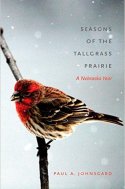
|
|
The Birds of NebraskaPaul A. Johnsgard
Zea Books
Revised edition
2013
"This summary of the birds of Nebraska grew out of the research associated with the writing of my Birds of the Great Plains: Breeding Species and Their Distribution (University of Nebraska Press, 1979). Inasmuch as the only previous comprehensive summary of Nebraska's birds, the "Revised Check-list of Nebraska Birds" (Occasional Papers of the Nebraska Ornithologists' Union, 1958) was about 40 years old, and has since received only a minimal revision that covered the period to 1970, it seemed apparent to me that a completely new list of birds of the state should be prepared. For my present purposes this list has been restricted to those species that have been convincingly reported at least once in Nebraska from historic time to the present. It has also been modified in its current revision to conform very closely in that regard to the most recent Nebraska Ornithologists' Union's "Official list of the birds of Nebraska" (Brogie, 2010; NOU Records Committee, 2011 and annual updates). Many important records of Nebraska's birds are published in the official journal of the Nebraska Ornithologists' Union (N.O.U.), the Nebraska Bird Review. Because of the amazing proliferation of records (and birders) since the early 2000s, it was impossible for me to summarize individually all of the post-2000 records published in the Nebraska Bird Review except for those I considered most important. I also excluded some records of exotic waterfowl that almost certainly were escaped from captivity. The seasonal reports in that journal are by far the most complete and most valuable record of current bird life in Nebraska, and fortunately this journal is now being archived in the University of Nebraska's Digital Commons website."
|
 |
|
Birds of the Central Platte River Valley and Adjacent CountiesMary Bomberger Brown and Paul A. Johnsgard
Zea Books
2013
"The central Platte River Valley region of Nebraska is described ecologically, and defined as encompassing 11 counties and nearly 10,000 square miles, and extending about 120 miles from the western edge of Lincoln County to the eastern edge of Merrick County. At its center is the Platte River, the historic spring staging area for Sandhill and Whooping cranes, five species of geese, and millions of waterfowl and water-dependent birds, in addition to providing the breeding habitats for more than 100 other bird species. Collectively, at least 373 bird species have been reported from the Central Platte Valley, making it the most species-rich bird location in Nebraska, and of the most species-diverse regions in the Great Plains. The abundance, distribution and habitats of these species are summarized, with special consideration given to the Valley's three nationally threatened and endangered birds, the Whooping Crane, Interior Least Tern, and Piping Plover, and the now probably extinct Eskimo Curlew. Also included are a species checklist, a list of 82 regional birding sites, and a bibliography of 130 citations."
|
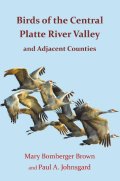 |
|
Midwestern Birds: Backyard GuideBill Thompson III
Cool Springs Press
2013
"Written by Bill Thompson III, the editor and co-publisher of Bird Watcher's Digest, this portable 5"x8" book contains the same variety of entertaining and informative entries that make Bird Watcher's Digest the nation's most popular birding magazine. Inside, you'll find profiles of the 55 most common birds in the Midwest, complete with large color photos, gender-specific physical descriptions, nesting and feeding information, bird call particulars, and interesting stories about each species. Thompson also introduces the reader to the basics of bird watching: essential gear, bird-friendly food and plantings, housing tips, and observational techniques. This guide covers Minnesota, Wisconsin, North and South Dakota, Iowa, Michigan, Illinois, Ohio, Indiana, Kentucky, Missouri, Arkansas, Kansas, Oklahoma, and Nebraska."
|
Buy from amazon.co.uk 
|
|
Birds of Southwestern NebraskaMary Bomberger Brown, Stephen J. Dinsmore, Charles R. Brown
University Of Nebrask
2012
"An annotated check-list of species in the North and South Platte River Valleys and at Lake McConaughy. Full color, convenient field guide format is the perfect size to carry with you as you view species. Full color photographs by Paul S. Johnsgard."
|
 |
|
Nebraska's Wetlands: Their Wildlife and EcologyPaul A. Johnsgard
University Of Nebraska
2012
"Wetlands are among the most productive of all North American ecosystems, supoporting half of the U.S. species of fish, a third of its birds, almost a quarter of its plants, and a sixth of its mammals. Dr. Paul A. Johnsgard's newest book describes for the reader the wetlands regions of Nebraska along with the individual ecosystems. Thirty-three drawings of the birds of the regions along with seven maps and fifteen tables bring the wetlands to life on the pages."
|
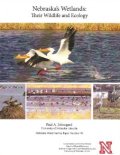 |
|
Wetland Birds of the Central Plains: South Dakota, Nebraska and KansasPaul A. Johnsgard
Zea Books
2012
"This 100,000-word monograph summarizes the distribution, abundance and breeding biology of the 183 species of wetland-adapted birds reliably reported from South Dakota, Nebraska and Kansas through 2011. These include 91 species known to breed or have historically bred in the region, 51 species that migrate through the region but are not yet known to breed or have bred there, and 41 species that are extremely rare, probably extinct, or for which evidence as to their current occurrence is questionable. Brief summaries of the breeding biology of all the regionally nesting species are provided, and information for all species is summarized as to seasonal migrations, habitats, and (in most cases) population status. There is an introductory account of the topography, climate and vegetation of the region insofar as these environmental factors influence wetland birds, six regional maps, and more than 500 references."
|
Buy from amazon.co.uk 
|
|
A Nebraska Bird-Finding GuidePaul A. Johnsgard
Zea Books
2011
"Nebraska lies in the transition zone between North American eastern and western avifaunas and is home to more than 200 breeding and 150 migrant species. This definitive guide to Nebraska birdwatching by the state's preeminent ornithologist includes a county-by-county rundown of the best sites, a calendar of migrations, an annotated checklist of regularly occurring Nebraska birds, and recommendations for optical equipment, publications and reference materials, and contact information for conservation and ornithological groups. It features 48 maps as well as photographs and drawings by the author."
|
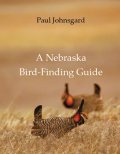 |
|
A Nebraska Bird-Finding GuidePaul A. Johnsgard
2009
Opening lines: "Persons living in Nebraska often feel that they are living in a cultural wasteland; its citizenry preoccupied with violent sports such as hunting and football. Yet many are unaware that they are actually residing in one of the prime locations in the entire world for observing and enjoying some of the most aesthetically appealing of all the world's biological attractions."
|
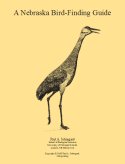 |
|
Birds of the Great Plains: Breeding Species and Their DistributionPaul A. Johnsgard
University of Nebraska-Lincoln Libraries
2009
This is a revised, electronic edition of a book that was originally published in 1980. This revised edition contains new range maps for many species, a new essay 'Three Decades of Change in Great Plains Birds,' and an updated bibliography of breeding bird surveys and state, regional, national, and species references.
"This book is the first to describe systematically all of the species of birds known to have bred or to breed at present in the Great Plains, a major ecological unit that encompasses all or part of part of eleven states: North Dakota, South Dakota, Minnesota, Iowa, Nebraska, Colorado, Kansas, Missouri, Oklahoma, New Mexico, and Texas."
|
 |
|
Waterfowl in Your Pocket: A Guide to Water Birds of the MidwestDana Gardner
University of Iowa Press
2008
"A welcome aid to identifying the many colorful and intriguing water birds of the midwestern states, from the Great Lakes west to the Dakotas, east to Ohio, and south to Kansas and Missouri. Illustrator Dana Gardner has created fourteen panels showing fifty-one species of ducks, geese, swans, grebes, pelicans, coots, cormorants, moorhens, and loons swimming and flying with complete plumage variations - dark phases, light phases, and juvenile and adult male and female forms in summer and winter. The text also includes length, common and scientific names, and frequency and distribution. Whether flying high overhead in the fall or swimming in a nearby lake in the summer, waterfowl are notoriously difficult to identify, and Gardner has worked hard to make this guide useful for beginning birders as well as those more experienced in the field."
|
Buy from amazon.co.uk 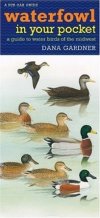
|
|
A Guide to the Natural History of the Central Platte Valley of NebraskaPaul A. Johnsgard
2007
Excerpt: "This booklet has been written in the hope that visitors to the Platte Valley may gain a greater appreciation for it through learning some of its animals and plants in addition to the Platte Valley's star spring attraction, its sandhill cranes. Besides the cranes, we have a world-class migration of geese and ducks, a slightly later migration of shorebirds, including what is probably the buff- breasted sandpiper's most important spring staging area between its South American wintering grounds and its arctic breeding grounds. Nebraska also has what may be the largest surviving population of greater prairie-chickens of any state, and an even larger population of sharp-tailed grouse. It is also perhaps the easternmost portion of the Great Plains where one can reasonably expect to see such classic grassland animals as prairie dogs, pronghorns, burrowing owls, prairie falcons, golden eagles and ferruginous hawks. Just to the north of the Platte Valley is the Sandhills region, a near-wilderness of 19,000 square miles with large populations of such classic grassland birds as long-billed curlews, upland sandpipers, homed larks, and a half-dozen species of grassland sparrows. And, just to the south of the Platte Valley is a unique Rainwater Basin, with dozens of spring meltwater ponds and marshes that seasonally support a large diversity of wetland species, Few other places in North America can provide to much appeal to birders and other naturalists. I hope you will enjoy the Platte Valley as much as I have done for nearly 50 year."
|
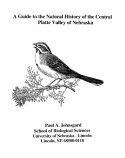
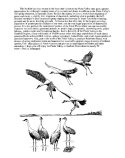 |
|
The Birds of NebraskaPaul A. Johnsgard
Revised edition
2007
A new edition was published in 2013.
"This summary of the birds of Nebraska grew out of the research associated with the writing of my Birds of the Great Plains: Breeding Species and Their Distribution (University of Nebraska Press, 1979). Inasmuch as the only previous comprehensive summary of Nebraska's birds, the 'Revised Check-list of Nebraska Birds' (Occasional Papers of the Nebraska Ornithologists' Union, 1958) was about 40 years old, and has since received only a minimal revision that covered the period to 1970, it seemed apparent to me that a completely new list of birds of the state should be prepared. In my view, this would include a fairly detailed statement of the ranges of the breeding species insofar as they are now understood, a more objective separation of abundance categories for the relatively rarer species, a summary of migration data for all migratory species, and a brief statement of habitats used by each species while it is in Nebraska."
|
 |
|
A Guide to the Tallgrass Prairies of Eastern Nebraska and Adjacent StatesPaul A. Johnsgard
2007
Opening lines: "This booklet represents an initial attempt at putting together some useful information on the locations, composition and ecology of tallgrass prairies of eastern Nebraska, one of the state's most valuable and most endangered ecosystems."
|
 |
|
Birds of the Great Plains: Oklahoma, Kansas, Nebraska, South Dakota, North Dakota, Missouri, Iowa, Minnesota, Montana, Wyoming, Colorado, New Mexico and TexasBob Jennings, Ted Cable and Roger Burrows
Lone Pine Publishing
2005
"Encounter 325 of the most common or notable birds found in the Great Plains states, presented with beautiful full-color illustrations and comprehensive notes on habitat, nesting, feeding and voice, as well as best sites for viewing. 312 color illustrations, 313 maps."
|
Buy from amazon.co.uk 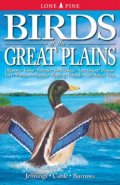
|
|
Faces of the Great Plains: Prairie WildlifeBob Gress and Paul A. Johnsgard
University Press of Kansas
2003
"The Great Plains are America's biological melting pot, drawing creatures from surrounding regions to create a rich diversity of wildlife. This book illuminates the enormous variety and uniqueness of prairie wildlife - featuring 150 of the most interesting and important species."
|
Buy from amazon.co.uk 
|
|
The Nebraska Breeding Bird Atlas 1984-1989Editor: Wayne J. Mollhoff
Nebraska Ornithologists Union / Nebraska Game and Parks Commission
2002
"Comprehensive description of breeding records of 191 species, with maps for each."
|
Buy from amazon.co.uk 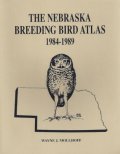
|
|
Birds of Nebraska: Their Distribution and Temporal OccurrenceRoger S. Sharpe, W. Ross Silcock and Joel G. Jorgensen
Nebraska University Press
2001
"Nebraska sits at the nexus of continental bird migration and serves as a home - either permanently or seasonally - for nearly 450 species. Major migratory routes pass through the state, creating numerous opportunities to observe the great variety of North American bird species. The annual crane migrations in spring are legendary, and other key events include winter concentrations of bald eagles, flocks of up to thirty thousand grebes, mergansers, and gulls at Lake McConaughy in late fall, and incredible concentrations of waterfowl in the Rainwater Basin in early spring. "Birds of Nebraska" captures the variety of Nebraska's ornithological possibilities in a style useful to hobbyists and professionals alike. For the first time in Nebraska ornithology, the authors have provided an exhaustive summary of state bird records compiled into concise but readable accounts of all species of birds reported in the state. This work covers taxonomy, early and late migration dates, high counts, nesting areas, and likely viewing locations."
|
Buy from amazon.co.uk 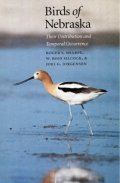
|
|
The Nature of Nebraska: Ecology and BiodiversityPaul A. Johnsgard
Nebraska University Press
2001
"Where the eastern and western currents of American life merge as smoothly as one river flows into another is a place called Nebraska. There we find the Platte, a river that gave sustenance to the countless migrants who once trudged westward along the Mormon and Oregon trails. We find the Sandhills, a vast region of sandy grassland that represents the largest area of dunes and the grandest and least disturbed region of mixed-grass prairies in all the Western Hemisphere. And, below it all, we find the Ogallala aquifer, the largest potential source of unpolluted water anywhere. These ecological treasures are all part of the nature of Nebraska. With characteristic clarity, energy, and charm, Paul A. Johnsgard guides us through Nebraska's incredible biodiversity, introducing us to each ecosystem and the flora and fauna it sustains and inviting us to contemplate the purpose and secrets of the natural world as we consider our own roles and responsibilities in our connection with it."
|
Buy from amazon.co.uk 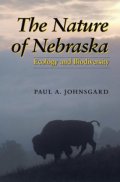
|
|
Birds of the Untamed West: The History of Birdlife in Nebraska, 1750 to 1875James E. Ducey
Making History
2001
"Ever wonder what the land of Nebraska looked like when Lewis and Clark traveled the region or when Prince Maximilian steamed up the Missouri River? Did the magnificent Sandhill Cranes fly their migratory route through Nebraska in the 1800s? Open James E. Ducey's Birds of the Untamed West and find out. Step back into the Nebraska of the eighteenth and nineteenth centuries . . . a land rich in birdlife and other natural beauty, long populated by Native Americans, yet just opening its riches to Euro-American settlers. Discover the role of birds in Native American daily life, myth, and religion. Experience the mystery and excitement early explorers felt as they forged into a land unknown to them. Journey through Nebraska's past, along river banks and virgin prairie, into Native American villages and U.S. military encampments, watching and listening all the while for the Birds of the Untamed West."
|
Buy from amazon.co.uk 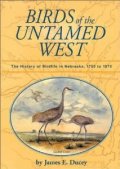
|
|
Swallow SummerCharles R. Brown
Nebraska University Press
1998
"Each May for fifteen consecutive years, Charles R. Brown has trekked to the Cedar Point Biological Station in western Nebraska to learn more about the behavior of colonial cliff swallows. He, his wife, and several student assistants spend the summers observing, catching, and banding swallows to determine life span, migration patterns, and nesting habits. Why study one species of swallow for fifteen years? With Swallow Summer Brown answers all the tourists, highway patrolmen, and local residents who have asked why he was leaning over bridges with nets, wading in mud up to his knees, or staring fixedly into culverts, where swallows often build their mud nests. He finds these birds fascinating. This book is about a passion for birds, but it is also about the personal challenges of scientific research. Brown provides a daily chronicle of field work at Cedar Point-including the joy of holding a swallow that has returned to the same site for eleven years and the inevitable frictions between researchers and local residents."
|
Buy from amazon.co.uk 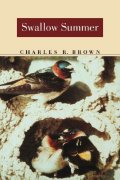
|
|
Nebraska: Wildlife Viewing GuideJoseph Knue
Falcon Press
1997
"Where-to guide to 68 viewing sites of the best locations to watch wildlife including mammals and birds in their natural environment."
|
Buy from amazon.co.uk 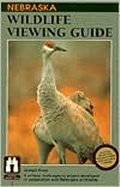
|
|
A Nebraska Bird-Finding GuidePaul A. Johnsgard
1997
A 40 page guide to birding sites.
|
 |
|
The Smithsonian Guides to Natural America: The Heartland: Illinois, Iowa, Nebraska, Kansas, MissouriSuzanne Winckler, Willard Clay, Charles Gurche, Michael Forsberg, Tom Till
Random House
1997
"Provides detailed descriptions of the national and state parks, wilderness preserves, natural sanctuaries, and other scenic wonders of America's heartland, furnishing information on the sites, their history, special activities, travel tips, and more."
|
Buy from amazon.co.uk 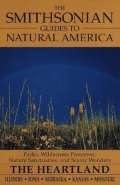
|
|
The Birds Of Nebraska And Adjacent Plains StatesPaul A. Johnsgard
Nebraska Ornithologists' Union
1996
A 40 page guide to birding sites.
|
 |
|
Habitat Selection and Productivity of Least Terns on the Lower Platte River, NebraskaEileen Kirsch
Monographs No.132
Wildlife Society
1996
A 48 page monograph. From the abstract: "Least terns (Sterna antillarum) were studied on the lower Platte River, Nebraska, where this endangered population nests on natural sandbar habitat and on sandpit sites created by gravel dredging adjacent to the river. Theoretically terns should select habitats according to habitat suitability. However, the introduction of sandpits and conversion of tallgrass prairies along the river banks to agriculture, residential, and wooded areas may have affected terns' abilities to distinguish suitable habitat or the suitability of nesting habitats in general. I examined habitat selection and productivity of least terns to determine if terns selected habitat according to suitability (as indicated by productivity), what factors affected habitat selection and productivity, and if estimated productivity could support this population."
|
 |
|
Breeding birds of the Platte River Valley of NebraskaCraig A. Faanes and Gary R. Lingle
Northern Prairie Wildlife Research Center
1995
"The Platte River Valley in central Nebraska is known throughout North America for its concentrations of sandhill cranes and waterfowl during spring migration. Fully three-quarters of the world's population of lesser sandhill cranes, nearly all of the Central Flyway population of greater white-fronted goose, and over one million Canada geese spend most of the period from mid-February to early April along the Platte River. The yearly spectacle makes the Platte River a birdwatcher's paradise. The main objective of this study was to determine the numbers and kinds of bird species nesting in the area, their populations, habitat preferences, and the geographical distribution of each species across the area. Included are information about species status (including nests, fledglings, and nesting attempts), distribution, habitat use during the breeding season, the effect of habitat alteration on species distribution and abundance."
|
 |
|
Birding Crane River: Nebraska's PlatteGary R. Lingle
Harrier Publishing
1994
Guide to Birding sites.
|
Buy from amazon.co.uk 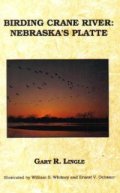
|
|
Birds of the Lake McConaughy Area and the North Platte River ValleyRichard C. Rosche
Illustrations: Dorothy J. Rosche
1994
|
 |
|
The Platte River: An Atlas of the Big Bend RegionAllan Jenkins
University of Nebraska
1993
"Covers geography, climate, biology, history, literature, art, economics, agriculture, demographics, water, law, and people of the region. Includes colour illustrations and foldout maps. Includes bibliographical references. Appendices include lists of plants, birds, mammals, fish, and amphibians & reptiles of the Big Bend region."
|
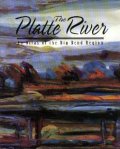 |
|
An Atlas of the Sand HillsEditor: Ann Bleed and Charles Flowerday
University of Nebraska
1990
"The 19,300-square-mile Sand Hills region is the largest sand-dune area in the Western Hemisphere. The large sand masses were formed by blowing sand during the last 8,000 years or less. The climate ranges from subhumid in the east to semiarid in the west. Although most of the species do not originate there, the mixture is distinctive because the area is an ecological meeting ground, creating distinctive biological communities. This atlas examines the Sand Hills' natural history in detail, richly illustrated in more than 200 full-color photographs and maps, charts and diagrams. Subjects examined include climate; geology; soils; groundwater; streams; lakes and wetlands; introduction to plants and animals; plants; insects; fishes; amphibians and reptiles; birds; mammals; anthropology; land development and use; range management; and mineral resources."
|
Buy from amazon.co.uk 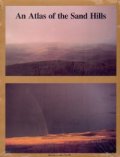
|
|
Nebraska Birds: Breeding Status and DistributionJames E. Ducey
Simmons Boardman Books
1988
Guide to Birding sites.
|
Buy from amazon.co.uk 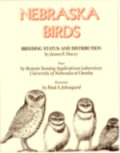
|
|
The Birds of Nebraska, A Critically Evaluated ListT.E. Bray, B.K. Padelford, and W.R. Silcock
1987
|
 |
|
Migratory Bird Habitat on the Platte and North Platte Rivers in Nebraska Paul J. Currier, James Lewis, Gary R. Lingle
Whooping Crane Critical Habitat Trust
1984
|
Buy from amazon.co.uk 
|
|
Birds of the Great Plains: Breeding Species and Their DistributionPaul A. Johnsgard
University of Nebraska Press
1980
"This book is the first to describe systematically all of the species of birds known to have bred or to breed at present in the Great Plains, a major ecological unit that encompasses all or part of part of eleven states: North Dakota, South Dakota, Minnesota, Iowa, Nebraska, Colorado, Kansas, Missouri, Oklahoma, New Mexico, and Texas. Although the original Great Plains ecosystem - the grassland biome - has been greatly altered by modem agriculture, remnants still exist in national and state parks, grasslands, and refuges, as well as in rural cemeteries, railroad rights-of-way, and small nature reserves. These areas support populations of nearly all the original and introduced birdlife - approximately 320 species - of the Great Plains."
|
Buy from amazon.co.uk 
|
|